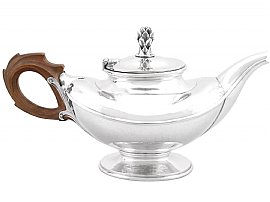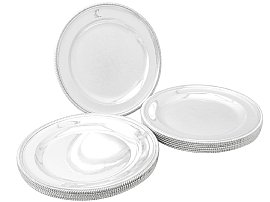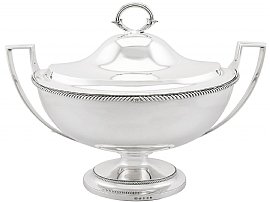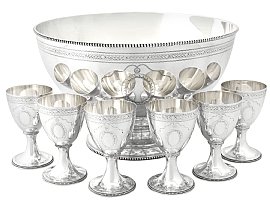Well Known and Collectable Makers
There are many renowned silversmiths who have become 'collectable' makers of antique silver in their own right.
Below is a list and brief history of some of the more well known craftsmen and women:
(In alphabetical order using surname)
Bateman Family
John, Peter, Jonathan, Ann, William I, William II and Hester Bateman
Hester Bateman is possibly the most renowned English female silversmith. She ran and developed her late husband’s business, creating a family dynasty of silversmiths that lasted for nearly 100 years.
The quality of Hester’s work, combined with the fact she was a female silversmith, of whom there were/are few, has made her one of the most sort after makers worldwide.
Hester’s date of birth is unconfirmed, but records show she was baptised 7 October 1708.
Around the age of 15, Hester, an uneducated young girl married John Bateman, a chainmaker and wire drawer in central London in 1732.
Hester and John produced five children, John, Peter, Jonathan, Letitia and Ann.
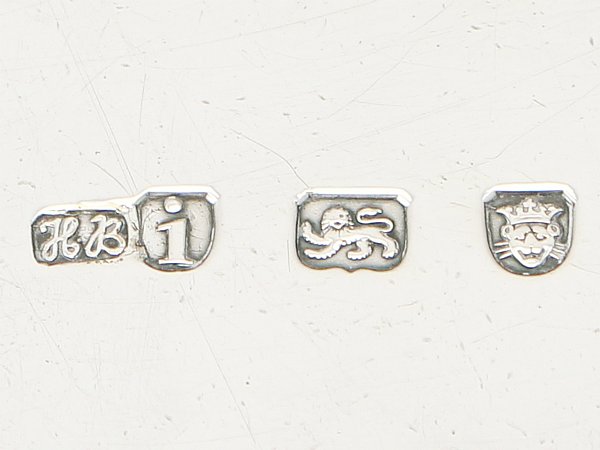
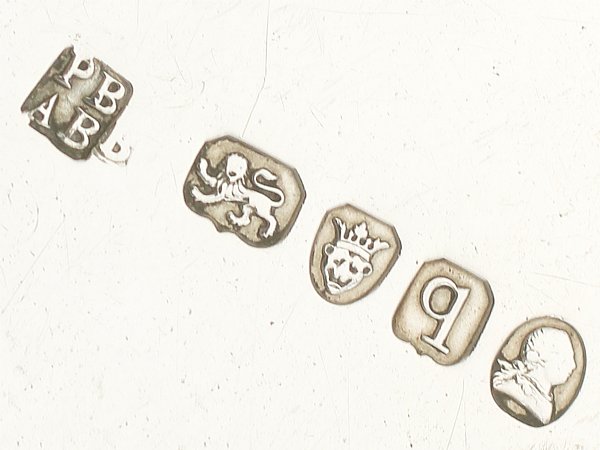
Upon the death of her husband John in 1760, Hester became owner of his metalwork business and workshop. A year later, Hester registered her own mark (HB) at the Goldsmith’s Hall as a smallworker, progressing to the mark of a goldsmith by 1773.
It was only by the mid 1770’s that Hester’s work became more widely recognised as she employed modern silversmithing techniques to create domestic products such as flatware, tea and coffee pots, salvers and sauceboats which retained classic design features.
As well as progressing in her own right as a talented silversmith, Hester developed the family business by working alongside her children John, Peter and Jonathan and an apprentice John Linney.
Prior to working for their mother, both Peter (born 1740) and Jonathan Bateman (born 1747) were apprenticed to their brother in law, Richard Clarke, Letitia Bateman’s husband.
Peter and Jonathan registered their first mark in 1790, when Hester, their mother, retired from the craft. On Jonathan’s death, Peter went into partnership with Ann Bateman (Jonathan’s widow), registering their joint mark in 1791.
Ann and Jonathan bore several children, the two sons who survived being Jonathan and William. It was William, (Hester’s grandson), who entered into partnership with Peter and Ann.
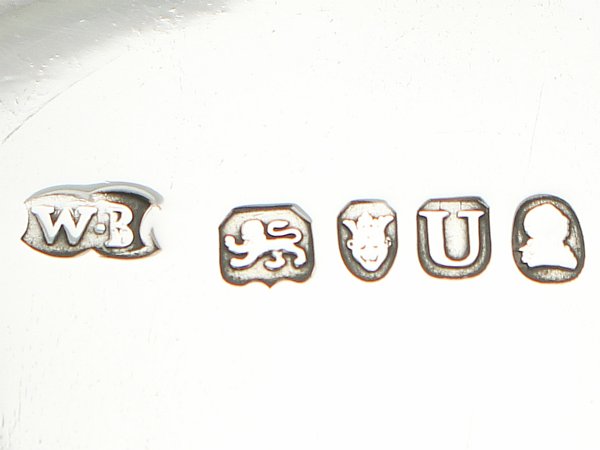
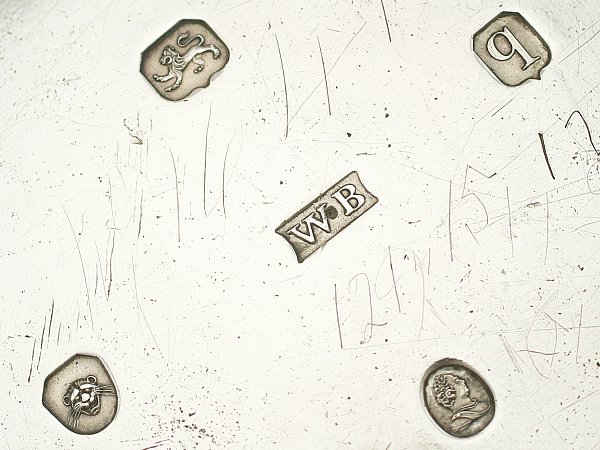
After Ann’s death and Peter’s retirement, William was registered from 1815 – 1840 as William I Bateman.
William married Ann Wilson, who bore him three sons, the eldest being William II (born circa 1801).
William II apprenticed under his father in 1815, registering his first mark in 1827 as a plateworker, continuing the family tradition of silversmithing until his death in the mid 1870’s.
Bateman items are often characterised by bead decoration or bright cut engraved decoration of a distinctive high quality, adding to their desirability not only as new and affordable items of ‘luxury’ silver in the 18th century, but as definitive collector’s pieces in the 20th century.
Hester’s work may be deemed as the ‘most’ desirable and collectable Bateman silver, despite the fact that William II was by far the best in the family. Items marked with the partnership mark of Peter and Jonathan Bateman (PB over JB) are scarce and have a rarity value, as this partnership only lasted for five months before Jonathan’s death in April 1791.
View a selection of pieces made by members of the Bateman family
Stuart Devlin
Stuart Devlin was born in Geelong, Australia in 1931.
He is a contemporary gold and silversmith who now works in West Sussex.
One of Devlin's many claims to fame is that he deigned the first decimal coinage for Australia in 1964. He has subsequently deigned coins for 36 countries throughout the world.
In 1965 Devlin moved to London where he opened a small workshop where he created his individual style of 'textured' silverware, which is now very collectable.
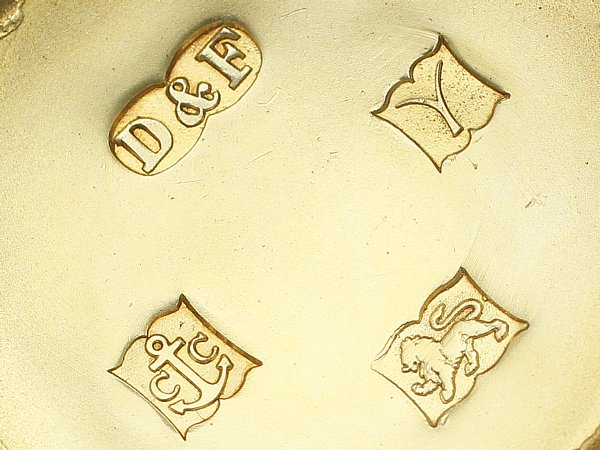
Elkington
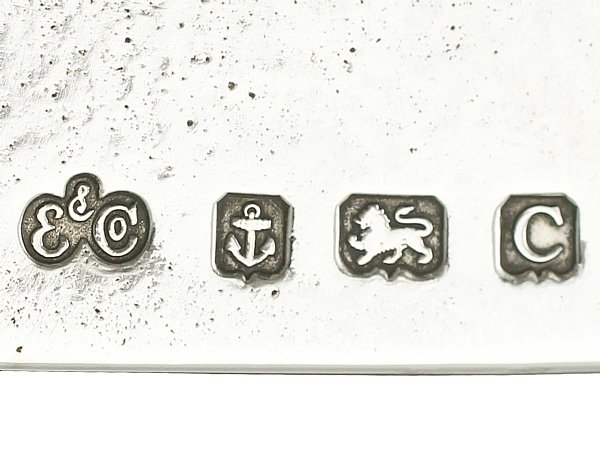
George Richards Elkington was born on 17th October 1801 to James Elkington, a gilt toy and spectacle maker,and Lydia Richards at St Paul's square in Birmingham.
In his early teens, George was apprenticed under his uncles Josiah and George Richards where he demonstrated excellent business capabilities in addition to his craftsmanship as a bronze caster.
He initially went in to partnership with his uncles, and on their deaths became the sole owner of the company.
When he was in his thirties, George Richards Elkington took his cousin Henry Elkington (son of John Elkington) into his business with him, becoming H & GR Elkington.
The cousins experimented with improving gilding techniques, and in the late 1830’s they took out a patent for the electroplating process.
The company received financial backing from Josiah Mason in the early 1840’s and for the next 20 years the firm was renamed Elkington, Mason & Co.
The electroplating process soon superceded the former Old Sheffield Plate, and it was through this process that Elkington & Co became an internationally recognised name in the silver trade.
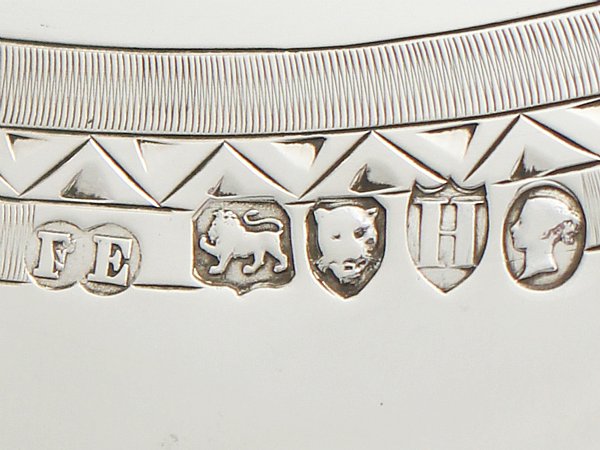
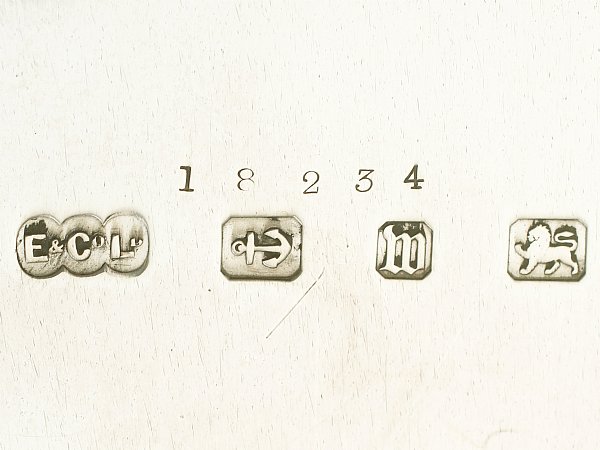
In 1851 Elkington & Co exhibited to great acclaim at the Great Exhibition held at Crystal Palace in Hyde Park, London, organised by Prince Albert and Henry Cole as an international showcase for modern technology and industrial achievement.
When George Richards Elkington died in 1865, his company employed nearly a thousand workers and was established as the leading electroplate company in the world.
The Elkington company held Royal Warrants for Queen Victoria, King Edward VII, Queen Alexandra, King George V, Queen Mary, King Edward VIII and King George VI.
In 1963 Elkington & Co combined with Walker & Hall and Mappin & Webb under the company name of British Silverware Ltd.
View a selection of pieces made by Elkington
Garrards Silversmiths
CHRONOLOGY:
George Wickes, 1722-1730
Craig & Wickes, 1730-1735
George Wickes, 1735-1750
Wickes & Netherton, 1750-1760
Parker & Wakelin, 1760-1776
Wakelin & Taylor, 1776-1792
Wakelin & Garrard, 1792-1802
Robert Garrard, 1802-1818
R, J & S. Garrard (or Robert Garrard & Brothers), 1818-1835
R.&S. Garrard, 1835-1843
R & S Garrard & Co, 1843-1909
Garrard & Co Ltd, 1909
Amalgamated with The Goldsmiths & Silversmiths Co Ltd, 1952
Asprey & Garrard, 1998-2002
Garrard & Co Ltd, 2002
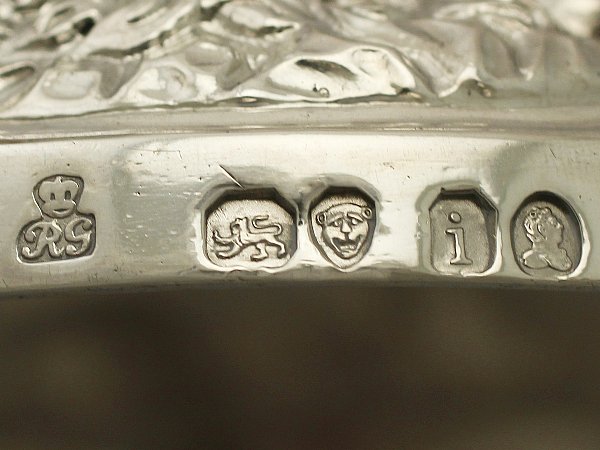
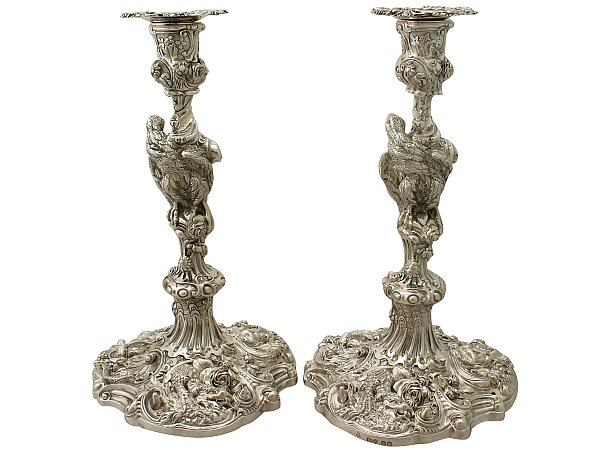
Founder of the firm was George Wickes who set up business in Threadneedle Street London, entering his mark in Goldsmiths' Hall in 1722.
In 1802 Robert Garrard (senior) took sole control of the firm active in Panton Street, Haymarket, London the business had already been established sixty-seven years.
Robert Garrard II was apprenticed in 1809 to his father, Robert Garrard I, gaining his freedom of the Grocers' Company by patrimony in 1816.
After his death in 1818 Robert Garrard I was succeeded by his three eldest sons, Robert Garrard II, James Garrard and Sebastian Garrard - trading as R, J & S. Garrard.
The firm became R. & S. Garrard in 1835, R. & S. Garrard & Co in 1843 and Garrard & Co Ltd in 1909.
The company remained in the hands of the Garrard family until the death of Sebastian Henry Garrard, great-grandson of Robert Garrard senior, in 1946.
In 1952 the firm was amalgamated with Goldsmiths & Silversmiths Co Ltd.
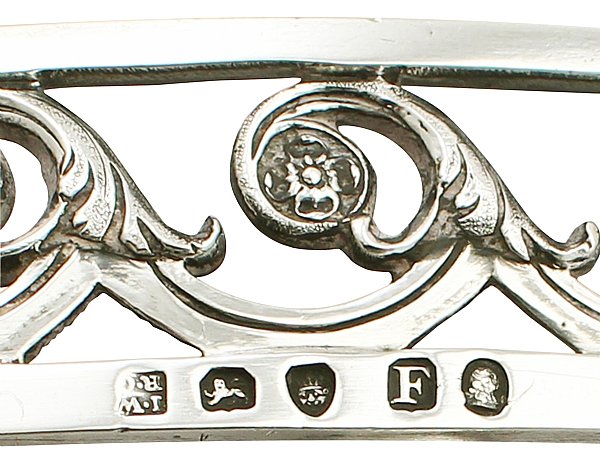
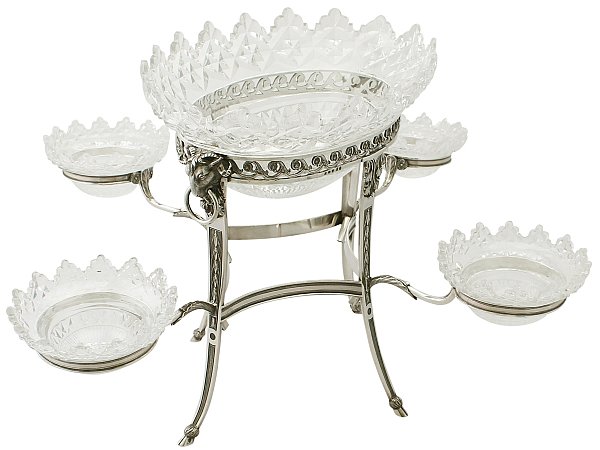
Since 1843, when Queen Victoria bestowed the honour of Crown Jeweller on the company, Garrard has served six successive monarchs, ending this service in 2007 when Queen Elizabeth II appointed G. Collins and Sons as the new Crown Jewellers (although Garrard still holds a royal warrant from the Prince of Wales). In this role, Garrards produced numerous pieces of silverware and jewellery for the Royal Family, in addition to the upkeep of the Crown Jewels.
Ceremony and pageantry has always been a key element in the company's heritage as well as the association with great sporting events. Spectacular trophies and centrepieces display excellent examples of superb silver craftsmanship.
Robert Garrard II’s hallmark of 1848 is found on the well-known America's Cup*.
More modern presentation trophies crafted by Garrards include; the Dubai World Cup, the Cricket World Cup, the Premier League Trophy.
The current "crown and G" logo is based on Robert Garrard's 1822 hallmark.
* The America’s Cup - one of the oldest and best-known trophies in international sailing yacht competition. It was first offered as the Hundred Guinea Cup on Aug. 20, 1851, by the Royal Yacht Squadron of Great Britain for a race around the Isle of Wight.
The cup was won by the America, a 100-foot (30-metre) schooner from New York City, and subsequently became known as the America’s Cup.
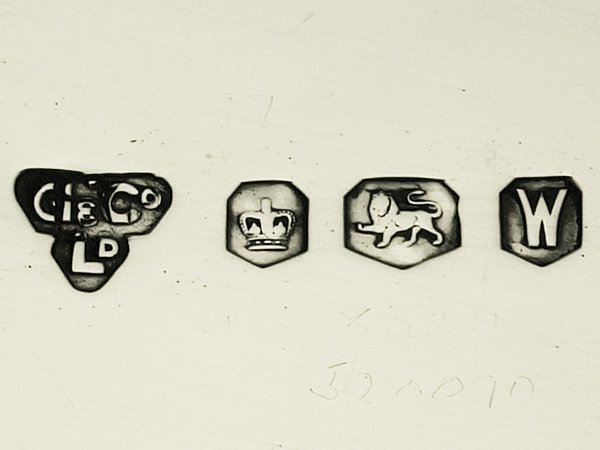
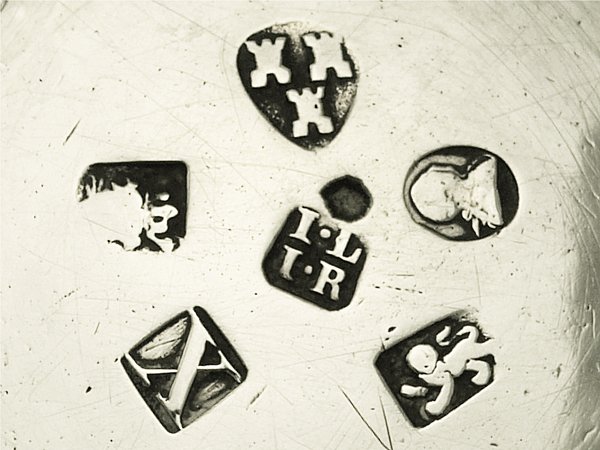
Langlands Family - John I, John II and Dorothy
For sixty years the Langlands family were the largest manufactureres of plate in Newcastle.
After the death of Isaac Cookson in 1754, two of his former apprentices and journeymen John Langlands I and John Goodrick took over his business manufacturing a moderate range of silverware.
This partnership ended with the death of Goodrick in 1757; the business not only survived, but continued to thrive and in 1788 John Langlands I formed a partnership with John Robertson I. This well respected and recognised partnership was dissolved in 1795, two years after Langland's death.
Under the management of Langland's son, John Langlands II the business continued to produce a high level of silver plate, and even after his death in 1804, his widow Dorothy Langlands maintained a flourishing business until her retirement in 1814.
Omar Ramsden
Ramsden was born in Sheffield, England in 1873. He died in 1939.
He went in to partnership with Alwyn Carr, an experienced enamellist and silversmith, and their Maker's mark was registered at Goldsmiths Hall in 1898. (The partnership was dissolved in 1919 and both men continued to work independently).
Their work reflected the influence of both the Arts and Crafts movement and Art Nouveau with pieces retaining the beaten, 'hand-crafted' look.
All Ramsden pieces were engraved 'Omar Ramsden me Fecit/Facit', meaning 'Omar Ramsden made me'.
View a selection of pieces made by Omar Ramsden
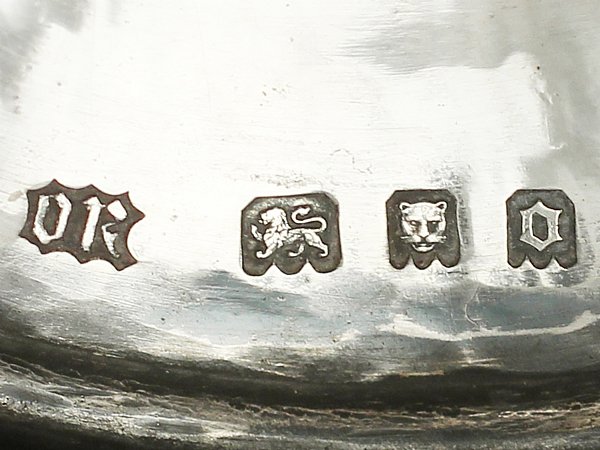
Paul Storr
Paul Storr (1771 - 1844) is regarded by many as one of the world's greatest silversmiths
Paul was born in Westminster, London in 1771, the son of a skilled silver chaser.
Having served a seven year apprenticeship, Paul registered his own maker's mark with the London Assay Office.
Over the years, Paul produced high quality silver items, showing his mastery of the craft, which is still recognised and appreciated today.
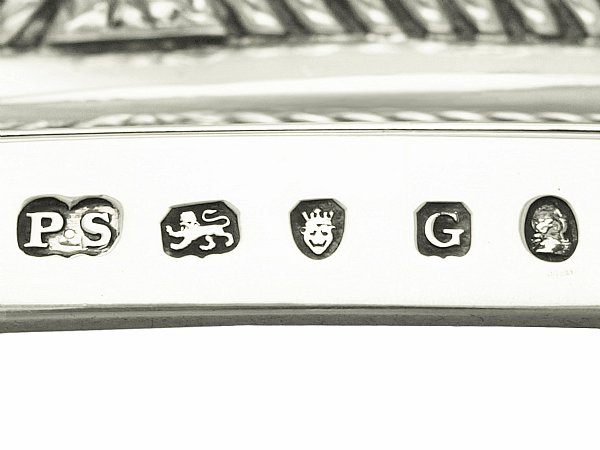
Paul's early work reflected the grandiose Neo-Classical style, whereas his later pieces had a more naturalistic design (though it may be said, often over embellished)
Whilst working for Rundell, Bridge and Rundell, Paul Storr produced a significant number of pieces for Lord Horatio Nelson, the Duke of Wellington and King George IV. Many such pieces may now be viewed in the Royal Collection held by HRH Queen Elizabeth II.
View a selection of pieces made by Paul Storr
_167_general.jpg)
